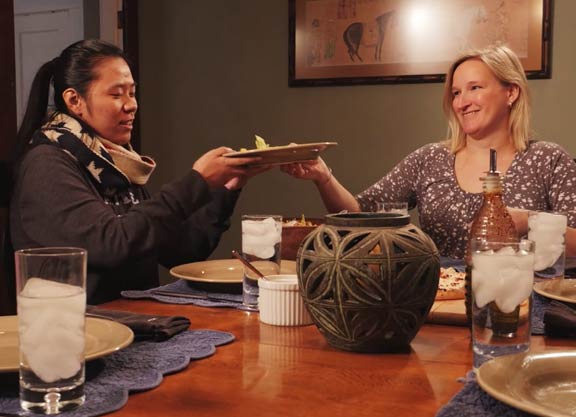Culture shock is a topic that comes up often within our hosting communities throughout the country and at our headquarters in Boston, Massachusetts. Hosts and gphomestay field staff support students through symptoms of culture shock, with the ultimate goal of helping students adjust to their new American lifestyles. Culture shock unsurprisingly has a lot to do with cultural differences, and the biggest differences that international students will likely recognize between here and there will be food.
International students study abroad in the U.S. to participate in the American education system, and make the most of their American experience. Host families should encourage students to try new things, especially food. However, during the second phase of culture shock when students might be experiencing homesickness or frustration with cultural differences, serving food from a student’s home country is a great way to help him or her feel more at ease.
Here are some essential Chinese comfort foods that you can offer an international student from China when they are experiencing homesickness.
Typical Breakfasts in China

Breakfast in China is typically served hot, and consists of rice porridge, dumplings or even noodles. This means that your students will be unused to and surprised by cold cereal. Don’t worry, students will adjust, but in case they are seeming homesick or craving a traditional Chinese breakfast, try the recipes below:
Fried Rice Recipes

It might surprise you that fried rice dishes are so widely eaten in China, since most would accept that the “Chinese food” offered in local communities in the United States has been modified to fit American palettes. While fried rice is not an everyday kind of meal in China, students will be used to eating fried rice as a simple dinner. Cambridge’s own, Angela Yao, has tried several recipes from cookinglight.com, and suggests that host families follow these same simple, fried rice recipes.
Chinese Tea

Americans tend to consume many cold or uncooked dishes, from breakfast cereal with milk to water with ice cubes. A hot meal can be just the ticket to helping your student feel more at home, and a hot beverage like tea can certainly help your students feel the same.
There are many different types of Chinese teas to choose from, and the best way to know which tea your student prefers is to ask! For starters, here are 10 Chinese teas that your student may be familiar with.
Regional Differences in Cuisine
China is a big country, and similarly to the United States, cuisine and preferences for food varies according to region. Here’s a short summary of the different types of cuisine your student has:
- Beijing – Food in Beijing is notable for it’s street food, and is often cooked with dark soy paste, sesame paste, sesame oil and scallions. Main dishes include Peking Roast Duck, Hot and Sour Soup and Moo Shu Pork.
- Guangzhou – Guangzhou is the hub of Cantonese cuisine, and features a variety of meat, dishes garnished heavily with garlic and fresh, tender and smooth flavors.
- Chongqing – Chongqing cuisine is a mix of Sichuan cuisine and local specialty dishes, like hot pot and the infamous taste-bud-numbing mala spice.
- Chengdu – In Chengdu, dishes have bold flavors and spices like Sichuan chili peppers, garlic, and sesame. Well known dishes include Mapo Tofu, Dan Dan Mian, Chao Shou Dumpling Soup and Hot Pot.
- Shanghai – Sugar is commonly used in Shanghai cuisine, especially with soy sauce. Common dishes include Sweet and Sour Ribs, Beggar’s Chicken and Lion’s Head Pork Meatballs.
- Hong Kong – Students from Hong Kong may be familiar with a variety of cuisines, including Western foods, since the city is an international hub for people from all over the world. Though, Cantonese and Chaozhou cuisine is popular in Hong Kong too.
Eat Meals Together, Often
Food is one of the most important aspects of culture, no matter where you are in the world. Customs and rituals around eating food are an insight into deeply rooted cultural identities.
To make the most of the hosting experience and to truly learn about another culture, eat meals with your student! Share your common humanity with each other, and encourage your student to join you in preparing meals as a family, regardless of whether those meals consist of American or Chinese dishes.




